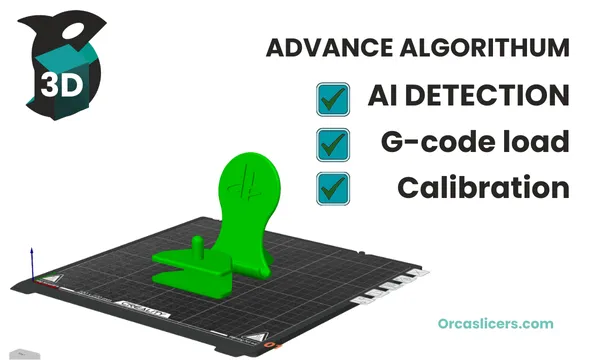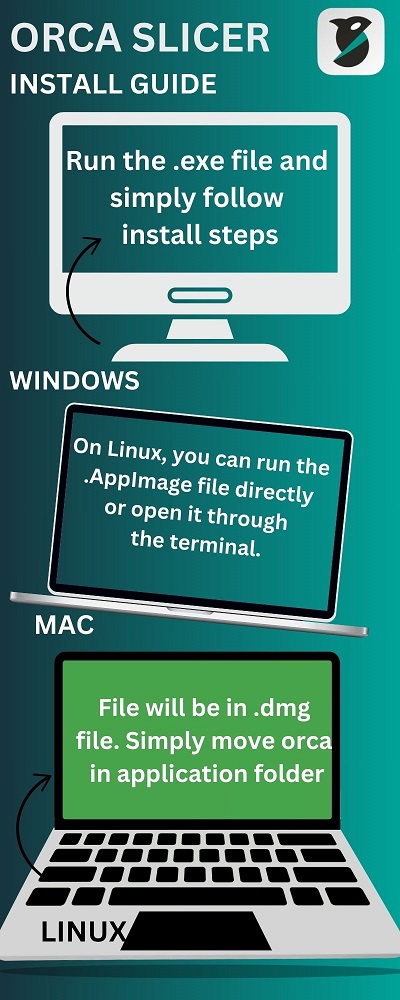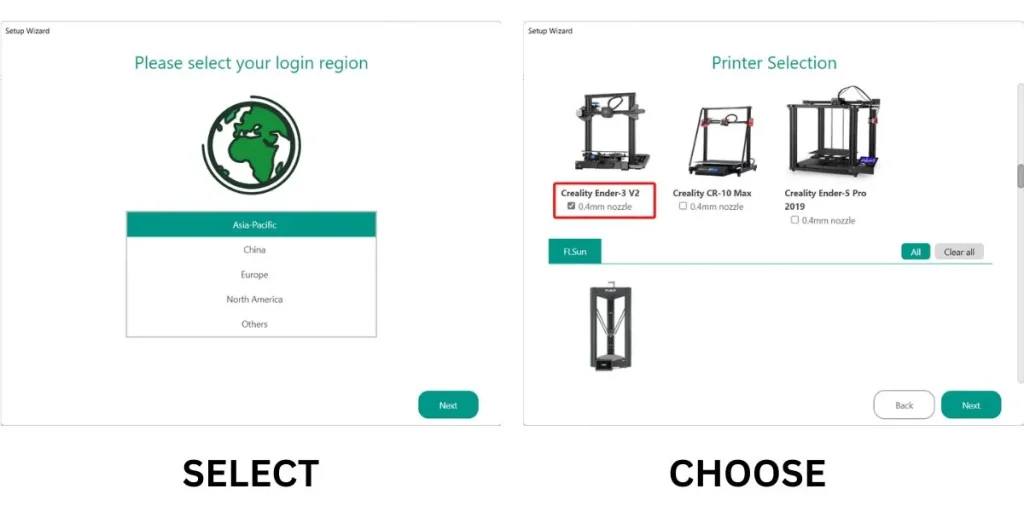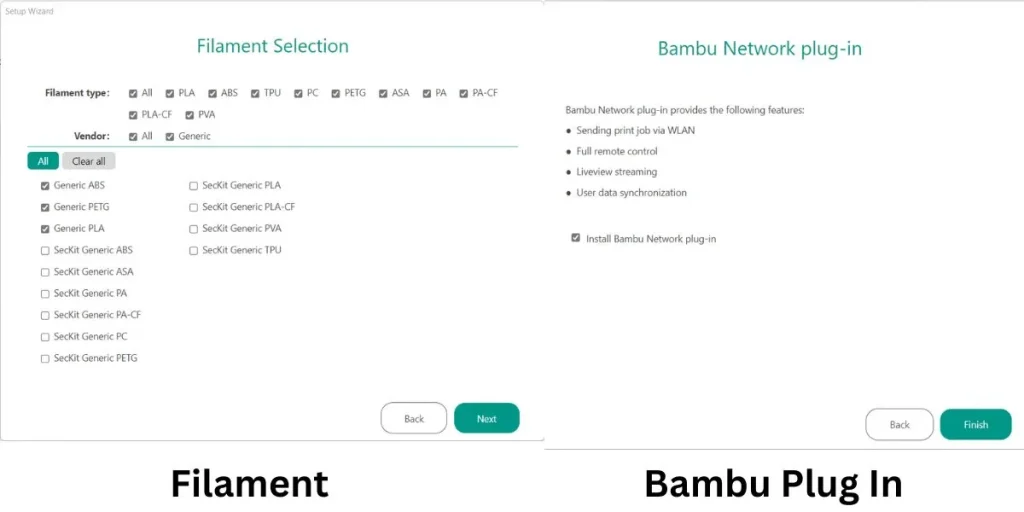Orca Slicer V2.3.0
Orca Slicer is a 3D printer slicer software that works on Android, Windows, Mac, and Linux. It is based on Bambu Studio and works with more printers than Prusa Slicer. Orca has more calibration tools, better fine-tuning controls, advanced slicing algorithms, and additional profiles

More Control
| Name | Orca Slicer |
| Developer | SoftFever |
| Size | 136 MB |
| Version | 2.3.0 |
| Last Updated | 7 July, 2025 |
| Alternative | Creality Slicer |
What is Orca Slicer?
Orca converts 3D models into G code. Printers understand G code language easily. So orca helps to print better after converting 3d models. It also slices the 3D models to thin horizental layers and create path for printer nozzle. Hence you will get high quality printing, better output and more flexible projects.
Orca Slicer reduces Z-seams with Seam Gap and Wipe on Loops, ensuring smoother prints with less blobbing and precise seam control. Users will get more control over prints because of additional printers profiles. Main benefit is that orca works on higher number of printers than orher traditional slicers.

Main Features
Auto Calibration
Orca has advance calibration tools that work in auto mode as well. Some calibrations, such as the temperature tower test, flow rate calibration, retraction test, tolerance testing, and others, are included.
Polyholes Support
This feature prevents deformation caused by numerical miscalculations. It also ensures the accuracy of holes and circular shapes in 3D designs.
Klipper Support
It works with Klipper firmware. This allows users to optimize prints on their printers, enabling Klipper for fast and accurate printing.
Granular Controls
It provides more granular controls than other slicers. These controls help create desired 3D products. Users can adjust parameters such as print speed, layer heights, pressure, and temperatures.
Sandwich Mode
Sandwich mode is a feature that helps users control layer properties, such as applying different patterns at varying densities from the inside to the outside. This produces clear and unique prints.
Easy to Use
Any newbie can use Orca Slicer easily. Thanks to its intuitive interface and straightforward navigation options, it is very user-friendly. You can create print models effortlessly, whether you are an expert or a beginner.
Works with 3D Printers
One of the main reasons for the increasing downloads of Orca Slicer is its compatibility with a wide range of 3D printers. This gives Orca more flexibility compared to traditional software.
Open and Free
Orca Slicer is an open-source project. It is made by the people, for the people. There are no charges, and it is absolutely free to use.
Printer Control
Now you can control your printer’s interface from your PC or laptop. This makes it much easier to perform 3D printing tasks smoothly.
Advance Features
Temperature Tower Test
Pressure Advance Settings
Manage All Printers
Built In Tests
Measuring and Scaling
Print One Piece at a Time
Download Orca Slicer (Latest)
For Windows
- Windows 7 or later
- 500 MB free space
- Multicore 64-bit processor recommended
- Minimum 4 GB RAM (8 GB recommended)
- Screen resolution: 1280 x 800 pixels
For Mac (arm 64)
- High Sierra (macOS 10.13) or later
- Supported Macs: Intel-based or Apple Silicon (M1/M2) with Rosetta 2
- 4 GB RAM minimum (8 GB+ recommended)
- 500 MB free disk space
- GPU with OpenGL 2.0+ support
- 1280 x 800 minimum resolution
- Size: 134 MB
For Linux (Older Distros)
- Modern Devices like Linux distributions (e.g., Arch, Fedora, Debian, Ubuntu)
- Processor: Intel Core i3 or equivalent, 64-bit
- 500 MB free space
- 4 GB RAM minimum (8 GB recommended)
- Graphics card should support OpenGL 2.0 or higher
- Screen resolution: 1280 x 800 pixels
- Size: 108 MB

If you are facing issues check orca Issues and solutions and compile process If you have trouble running it, use the command: chmod +x /path_to_appimage/OrcaSlicer_Linux.AppImage.
How To Compile
| Operating System | Development Tools | Compilation Commands | Important Notes |
|---|---|---|---|
| Windows 64-bit | Visual Studio 2019, CMake (3.14+), Git, Git LFS, Strawberry Perl | build_release.bat |
• Use x64 Native Tools Command Prompt • Run git lfs pull after cloning repository• Ensure Windows SDK installed |
| macOS 64-bit | Xcode Command Line Tools, CMake, Gettext, Libtool, Automake | ./build_release_macos.sh |
• Requires Xcode 11+ • Configure scheme settings in Xcode • Check Homebrew dependencies |
| Linux (All Distros) | Docker Engine, Git, Build Essentials | ./DockerBuild.sh./DockerRun.sh |
• Verify Docker permissions • Check kernel version requirements • Review Dockerfile configurations |
| Ubuntu/Debian | Auto-installed dependencies (see script) | sudo ./BuildLinux.sh -u./BuildLinux.sh -dsir |
• Run with administrator privileges • Verify package manager sources • Check for secure boot conflicts |
Orca Supported printers
Common models like Ender and CR series
Popular models like the i3 MK3 and larger printers like Prusa XL
Includes Mega and Kobra series
Models such as Sidewinder and Genius
X1 series and P1P for advanced features
Works with special setups like dual extruders (IDEX) or printers with multiple tools. Also check Pursa and Cura
Latest Updates
As Orca is an open source project, developers also contribute to it on GitHub. Here are some of the new updates in the latest version. Also know the update process.
- Better detection to avoid print head collisions
- Improved how wall layers are printed in the correct order
- Enhanced system to check if materials are compatible with AMS
- Fixed crashes caused by memory issues in G-code processing
- More accurate colors in preview thumbnails
- Fixed height calibration issues with the Z-axis
- Prevented failures during pressure advance calibration
- Fixed startup problem with extruder 16
- Each nozzle can now have its own temperature settings
- All printers now use one shared filament library
- Automatically selects the best filament settings for your printer model
- Easier process for manufacturers to submit new filament profiles
- Added some ready-to-use sample filament options
- Filament profiles can now be shared across different printers
- New fuzzy skin texture styles: Perlin, Billow, Ridged, Voronoi
- Added a new lightweight fill pattern for aircraft-like structures
Setup and Use Orca Slicer
- Step 1: Set the Login Region
- Step 2: Choose a 3D printer

- Step 3: Select the Filaments
- Step 4: Install Bambu Network Plug-in

FAQs
Official Help
Because it’s an open-source project and people frequently contribute to it, always stay updated with the latest developments
